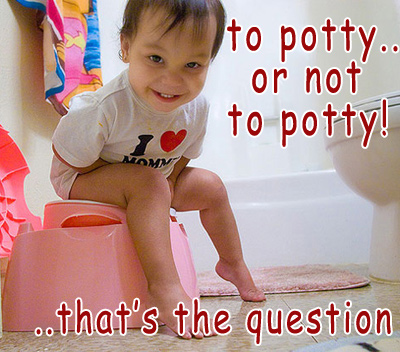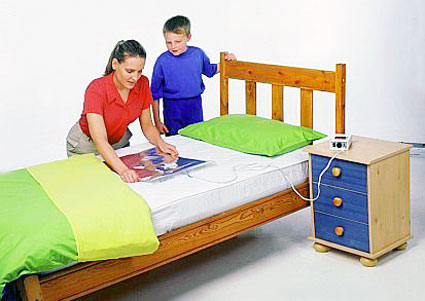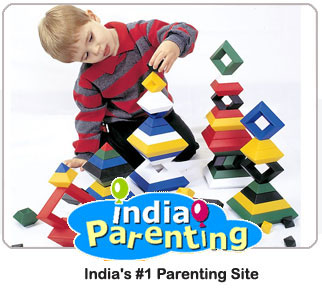Havingaheadachepottytrainingyourchild?Hereareafewtipsyoucanusetomakethejobalittleeasier.Oneofthejoysofparenthoodiswatchingyourlittlechildgrowandlearntodonewthings.Howeversomeoftheeasiesttasksandhabitscanbethemostdifficultforaparenttoteach.Oneoftheeasiestwaystoprepareyourselfistoreadvariousbookstogetadvice.Pottytrainingyourchildisnoexception.Techniqueisonlyoneofthefewthingstotakeintoconsideration.Hereisaguidetomakeyourtaskalittleeasier.InthisarticleTheRightTimeTheEquipmentTheApproachTheRightTimeBeforeyoubeginpottytraining,thefirststepistoascertainifitistherighttimetostartpottytrainingyourchild.Thoughmostparentsstarttrainingtheirchildattheearlyageoftwo,somechildrenbecomereadyonlyattheageoffour.Oneofthemostbasicrequirementsisthatyourchildshouldbeabletowalkandsitdown.Thisrequiresacertainamountofphysicalandcognitivedevelopment.Thiswillensurethatyourchildcangotothetoiletandhavetheabilitytopullhispantsdownunassisted.Othersignsthatindicateyourchildisreadyforpottytrainingarewhenhetriestoimitateothersintheirbathroomhabitsandcanexpresshisneedtousethetoilet.Therighttimetopottytrainachildiswhenheexhibitsbladdercontroltotheextentthathehasdryperiodsofatleastthreetofourhours.IntraditionalvillagesofIndia,pottytrainingbeginsatanearlyage.Pottytrainingiscarriedoutbeforethechildcanevenwalkproperly.ThedifferencebetweentheWesternandIndianapproachtopottytrainingisthattheWesternculturefocusesmoreontheuseofdiapersforchildrenwhiletheIndianapproachisdiaperfree.Thebabyindicateshisneedtousethetoiletbygruntingormakingsounds.Onceababybeginstocrawl,andisfoundtocrawltothebathroom,parentscanidentifyhisneedandhelpwiththerest.Mothersholdtheirbabiesintheirarmsandgiveverbalcuesthatpromptthebabytodefecate.Theymayholdtheirbabiesoverasinkorabowl.Thechildeventuallywillgraduatetousingacommodebutwillneedhelpindisrobingforquitesometime.Babieswhostartwiththismethodarealmostcompletelypottytrainedwithin15to18monthswithafewaccidentshappening.Thus,thisisaquickerapproach.However,itshouldbenotedthatparentsmaystillneedtoassisttheirchildrenwithgettingtothetoiletatthisstage.TheEquipmentMosturbanparentsnowoptforthewesternmethodofpottytraining.Ifyouoptforthewesternmethod,ensurethatyouhavetherightequipmentbeforeyoustart.Eitherpurchaseachild-sizedpottyoraspecialseatthatcanbeattachedoveraregularpottyseat.Itisimportantthatwhicheverkindofseatitmaybe,yourchildcanbracehimselfwithhisfeettogivestability.TheApproachThefirststepistotryandexplaintheprocess.Seatyourchildonthepottyseatwithoutanappy,togethimusedtotheprocess.Trytoexplaintohimwhatyouwanthimtodo,tellinghimthatthisiswhathismotherandfatherdoes.Itisimportantforyouasaparenttohandleyourchildsmistakescalmly.Screamingatyourchildisdefinitelynotgoingtoputhimateaseorhelpinanyway.Talktoyourchildandensurethathedoesntfeelpressurised.Itwilltaketimeforyourchildtomastertheprocessofnotonlysittingontheseatbutcontrollinghisbladderandrectummovements.Tomakethingseasier,dressyourchildinclothesthathecaneasilygetoutofwhenheneedsto.Onceyoustartpottytrainingyourchild,alsostartteachinghimsomebasichygienetips.Thisincludeswashinghishandsandwipinghimself.Rememberthatasaparentyouneedtoconstantlypraisehimforhislittleachievements.Tellyourchildhowproudyouareofhim.Toomuchpraiseisalsonotagoodthing.Itmightpressuriseyourchildintothinkingthatyouareexpectingtoomuchfromhim.Encourageyourchildtobeindependentbytellinghimtousethepottywheneverheneedstoandreassuringhimthatyouwillalwaysbethereforhim.Youneedtogetyourchildusedtothepottyseat.Thiscouldbedonebyestablishingaroutinewhereyouhaveyourchildseatedonthepottyatcertaintimesregardlessofhisneedtouseitornot.Dothisonlyforafewminutesatatimeanddonotforcehim.Itisimportanttounderstandthatpottytrainingwilltaketime.Nighttrainingtakesevenmoretimeascomparedtodaytraining.Onewayofensuringthatthefrequencyofyourchildhavingawetnightreducesisbylimitingtheamountofwaterthatheconsumesbeforehesleeps.Tellyourchildthatifhewakesupinthenightandneedstousethepotty,hecandosowithyourhelp.Ifyouareusingaportablepotty,leaveitnexttoyourchildsbedandtellhimtocallyouforassistanceandhelpincleaningup.Youmayalsowanttoinvestinawaterproofmattresscovertomakecleaningupeasierandtoprotectyourchildsmattress.Successfulpottytraininghappenswithpersistenceonceyourchildisready.Persistenceandpatiencearekeytoteachingyourchildthisgrownuphabit.Aslongasyourchilddoesnotfeeloverlypressurised,hewillsoonlearnhowtodoit.
Having a headache potty training your child? Here are a few tips you can use to make the job a little easier.One of the joys of parenthood is watching your little child grow and learn to do new things. However some of the easiest tasks and habits can be the most difficult for a parent to teach. One of the easiest ways to prepare yourself is to read various books to get advice. Potty training your child is no exception. Technique is only one of the few things to take into consideration. Here is a guide to make your task a little easier.
The Right Time
Before you begin potty training, the first step is to ascertain if it is the right time to start
potty training your child. Though most parents start training their child at the early age of two, some children become ready only at the age of four. One of the most basic requirements is that your child should be able to walk and sit down. This requires a certain amount of physical and cognitive development. This will ensure that your child can go to the toilet and have the ability to pull his pants down unassisted.
Other signs that indicate your child is ready for potty training are when he tries to imitate others in their bathroom habits and can express his need to use the toilet. The right time to potty train a child is when he exhibits bladder control to the extent that he has dry periods of at least three to four hours.
In traditional villages of India, potty training begins at an early age. Potty training is carried out before the child can even walk properly. The difference between the Western and Indian approach to potty training is that the Western culture focuses more on the use of diapers for children while the Indian approach is diaper free.
The
baby indicates his need to use the toilet by grunting or making sounds. Once a baby begins to crawl, and is found to crawl to the bathroom, parents can identify his need and help with the rest. Mothers hold their babies in their arms and give verbal cues that prompt the baby to defecate. They may hold their babies over a sink or a bowl. The child eventually will graduate to using a commode but will need help in disrobing for quite some time.
Babies who start with this method are almost completely potty trained within 15 to 18 months with a few accidents happening. Thus, this is a quicker approach. However, it should be noted that parents may still need to assist their children with getting to the toilet at this stage.
The Equipment
Most urban parents now opt for the western method of potty training. If you opt for the western method, ensure that you have the right equipment before you start. Either purchase a child-sized potty or a special seat that can be attached over a regular potty seat. It is important that whichever kind of seat it may be, your child can brace himself with his feet to give stability.
The Approach
The first step is to try and explain the process. Seat your child on the potty seat without a nappy, to get him used to the process. Try to explain to him what you want him to do, telling him that this is what his mother and father does. It is important for you as a parent to handle your child's mistakes calmly. Screaming at your child is definitely not going to put him at ease or help in anyway. Talk to your child and ensure that he doesn't feel pressurised. It will take time for your child to master the process of not only sitting on the seat but controlling his bladder and rectum movements.
To make things easier, dress your child in clothes that he can easily get out of when he needs to. Once you start potty training your child, also start teaching him some basic hygiene tips. This includes washing his hands and wiping himself. Remember that as a parent you need to constantly praise him for his little achievements. Tell your child how proud you are of him. Too much praise is also not a good thing. It might pressurise your child into thinking that you are expecting too much from him. Encourage your child to be independent by telling him to use the potty whenever he needs to and reassuring him that you will always be there for him.
You need to get your child used to the potty seat. This could be done by establishing a routine where you have your child seated on the potty at certain times regardless of his need to use it or not. Do this only for a few minutes at a time and do not force him.
It is important to understand that potty training will take time. Night training takes even more time as compared to day training. One way of ensuring that the frequency of your child having a wet night reduces is by limiting the amount of water that he consumes before he sleeps. Tell your child that if he wakes up in the night and needs to use the potty, he can do so with your help. If you are using a portable potty, leave it next to your child's bed and tell him to call you for assistance and help in cleaning up. You may also want to invest in a waterproof mattress cover to make cleaning up easier and to protect your child's mattress.
Successful potty training happens with persistence once your child is ready. Persistence and patience are key to teaching your child this grown up habit. As long as your child does not feel overly pressurised, he will soon learn how to do it.

































